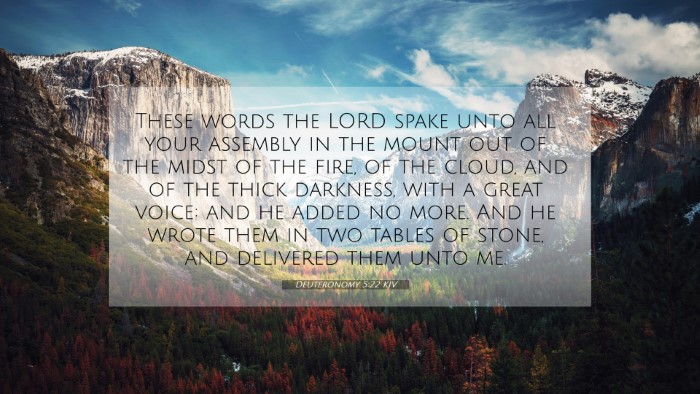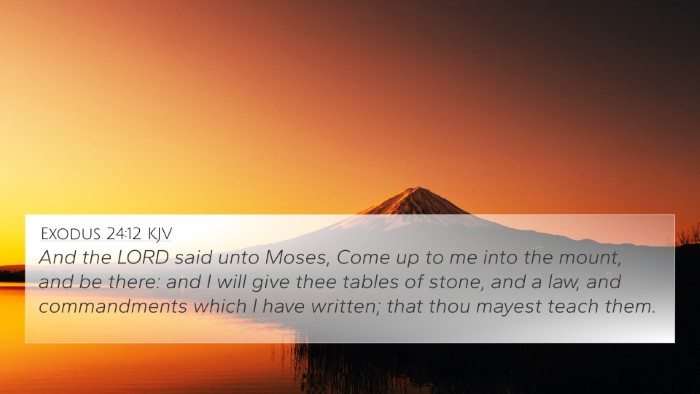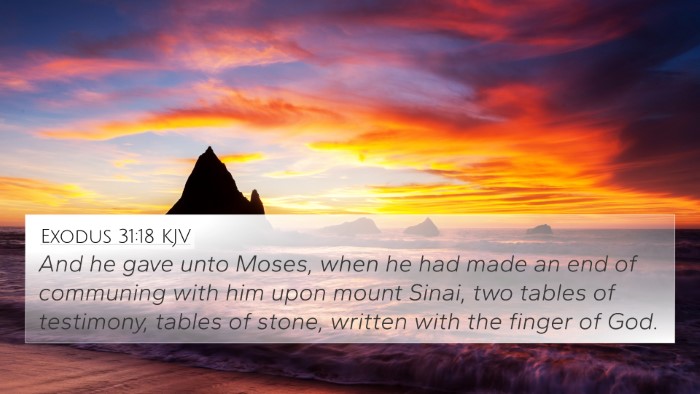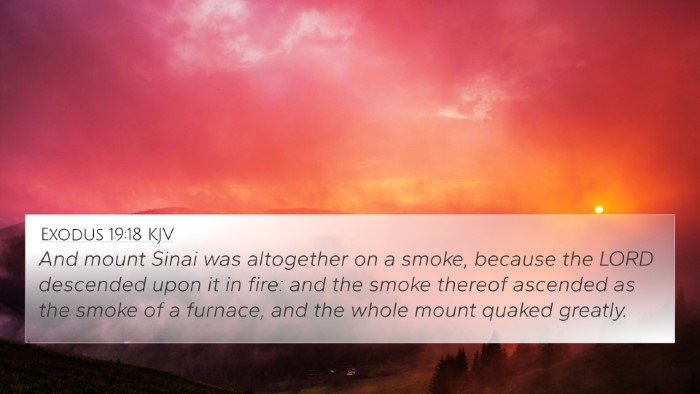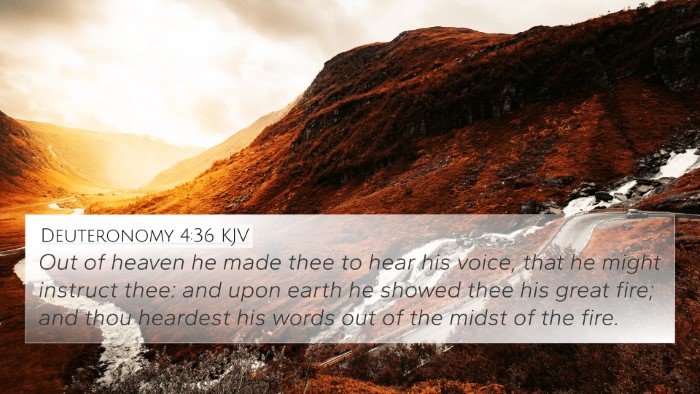Understanding Deuteronomy 5:22
Deuteronomy 5:22 states:
"These words the Lord spoke to all your assembly at the mountain out of the midst of the fire, the cloud, and the thick darkness, with a loud voice; and he added no more. And he wrote them on two tablets of stone and gave them to me."
This verse serves as a significant component of the account of the Ten Commandments, showcasing the authority and divine origin of God's law.
Summary of Insights
The insights from notable commentaries like those of Matthew Henry, Albert Barnes, and Adam Clarke provide a comprehensive understanding of this verse.
Matthew Henry's Commentary
Matthew Henry emphasizes the direct communication from God to the people, illustrating the gravity and seriousness of these commandments.
He notes that God's voice was loud and unmistakable, stressing the importance and solemnity of these words.
The fact that these commandments were given directly to the assembly underlines their foundational role in the covenant relationship between God and Israel.
Albert Barnes' Notes
Albert Barnes highlights the uniqueness of the experience at Mount Sinai, where God spoke directly and revealed His law to the Israelites.
He discusses the significance of writing the law on tablets of stone, indicating permanence and authority.
Barnes connects this moment with the overarching narrative of God’s relationship with His people, indicating that these commandments were meant to guide them in their journey of faith.
Adam Clarke's Commentary
Adam Clarke provides insights into the setting and the context of this divine revelation.
He points out the dramatic nature of the event, the phenomena accompanying God's voice, and the way the law was codified.
Clarke argues that the delivery of the law in this manner establishes its authority and serves as a pivotal moment in Israel's history, linking their national identity with the covenant established through these commandments.
Cross-References and Connections
Deuteronomy 5:22 is enriched with connections to several other Bible verses that illustrate the consistency and depth of God's messages throughout Scripture:
- Exodus 20:18-21: Describes the event of receiving the commandments and the people's reaction to God's voice.
- 1 Kings 8:9: References the tablets that contained God's commands, indicating their lasting significance.
- 2 Corinthians 3:3: Discusses how believers are a letter of Christ, written not with ink but with the Spirit of God, paralleling God's writing of the commandments on stone.
- Hebrews 8:10: Speaks of God putting His laws in the minds and hearts of His people, reflecting the transition from stone tablets to internalized faith.
- Matthew 5:17: Jesus acknowledges the law's significance, emphasizing continuity in His teachings with the commandments.
- Romans 2:15: Mentions the law written on hearts, a continuation of God's communication and authority.
- Revelation 11:19: Highlights the opening of the temple in heaven, which contains the ark of the covenant, symbolizing the enduring nature of God's law.
Thematic Connections
Thematically, Deuteronomy 5:22 serves as a bridge linking various key concepts in the Bible, such as:
- The authority of the Law: God's commandments define the moral and ethical code of the Israelite community and continue to influence Christian ethics.
- God's direct revelation: The importance of divine communication and guidance in the life of believers through the ages.
- The covenant relationship: The commandments are a foundational element of the covenant between God and Israel, relevant to understanding God's relationship with humanity.
Tools for Bible Cross-Referencing
To further explore these connections and better understand the scripture, utilizing tools such as a Bible concordance or Bible cross-reference guide can be invaluable.
These instruments assist in cross-referencing Biblical texts and identifying relationships and common themes across different verses.
Engaging in a cross-reference Bible study allows for a thorough examination of how different passages interact with one another.
Techniques such as thematic studies, identifying patterns between the Old and New Testaments, and exploring the links between specific verses enrich one's understanding of the Bible as a cohesive text.
Conclusion
Deuteronomy 5:22, illuminated through various commentaries and cross-references, reveals the significance of God's commandments as foundational truths for His people.
Engaging with this verse through a cross-referencing approach not only enhances the understanding of the text but also underlines its relevance throughout the entirety of the Bible.


